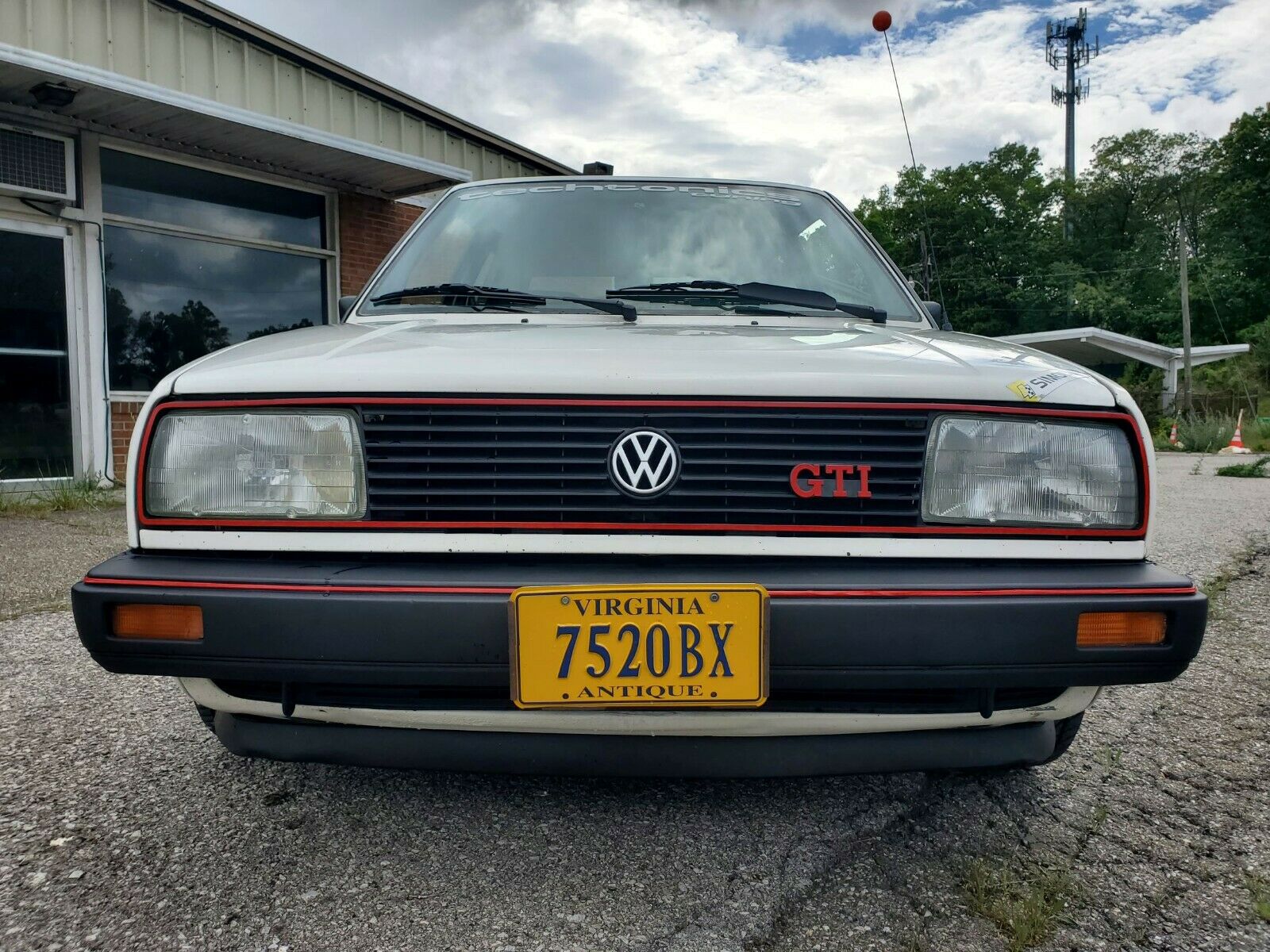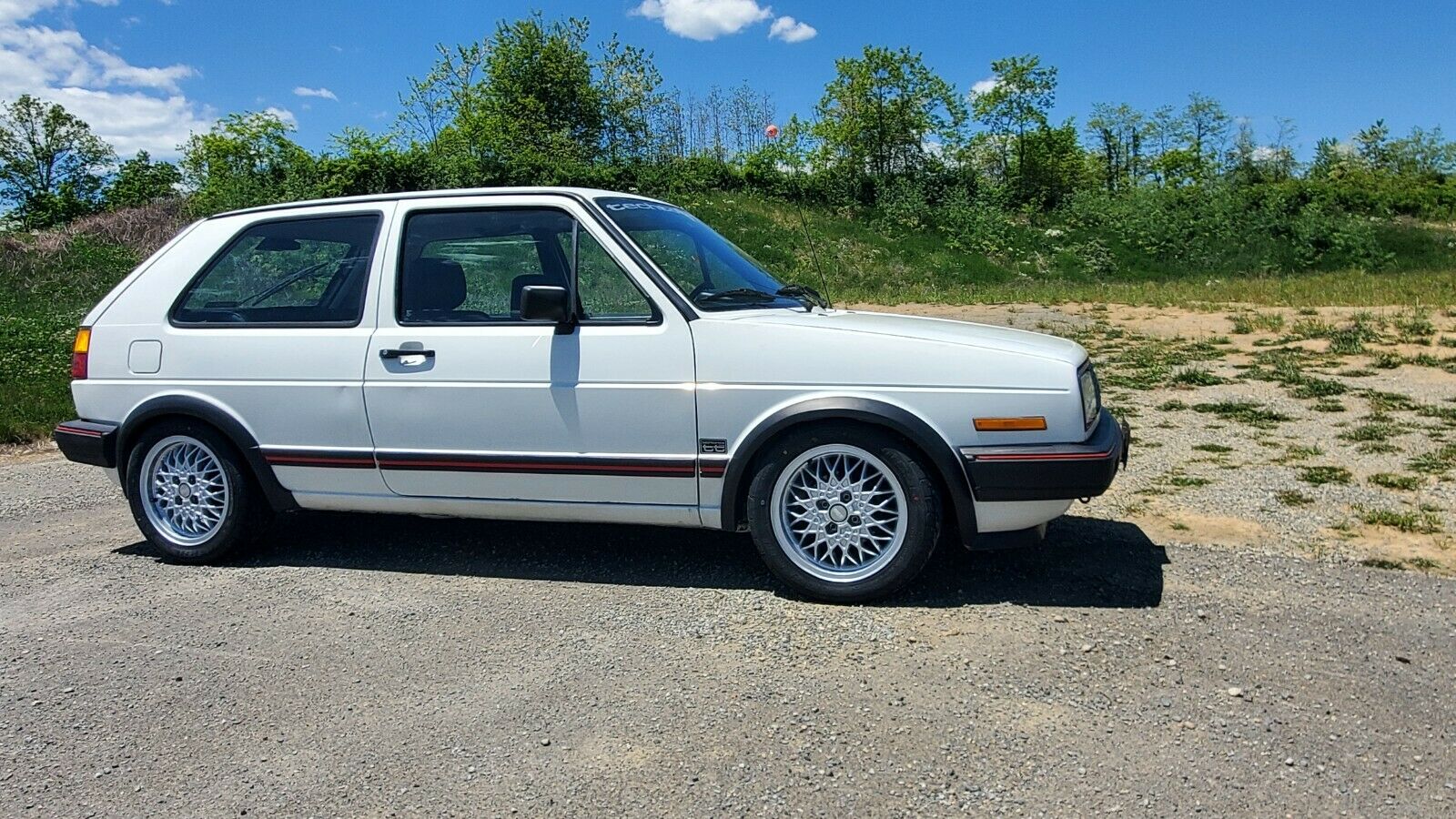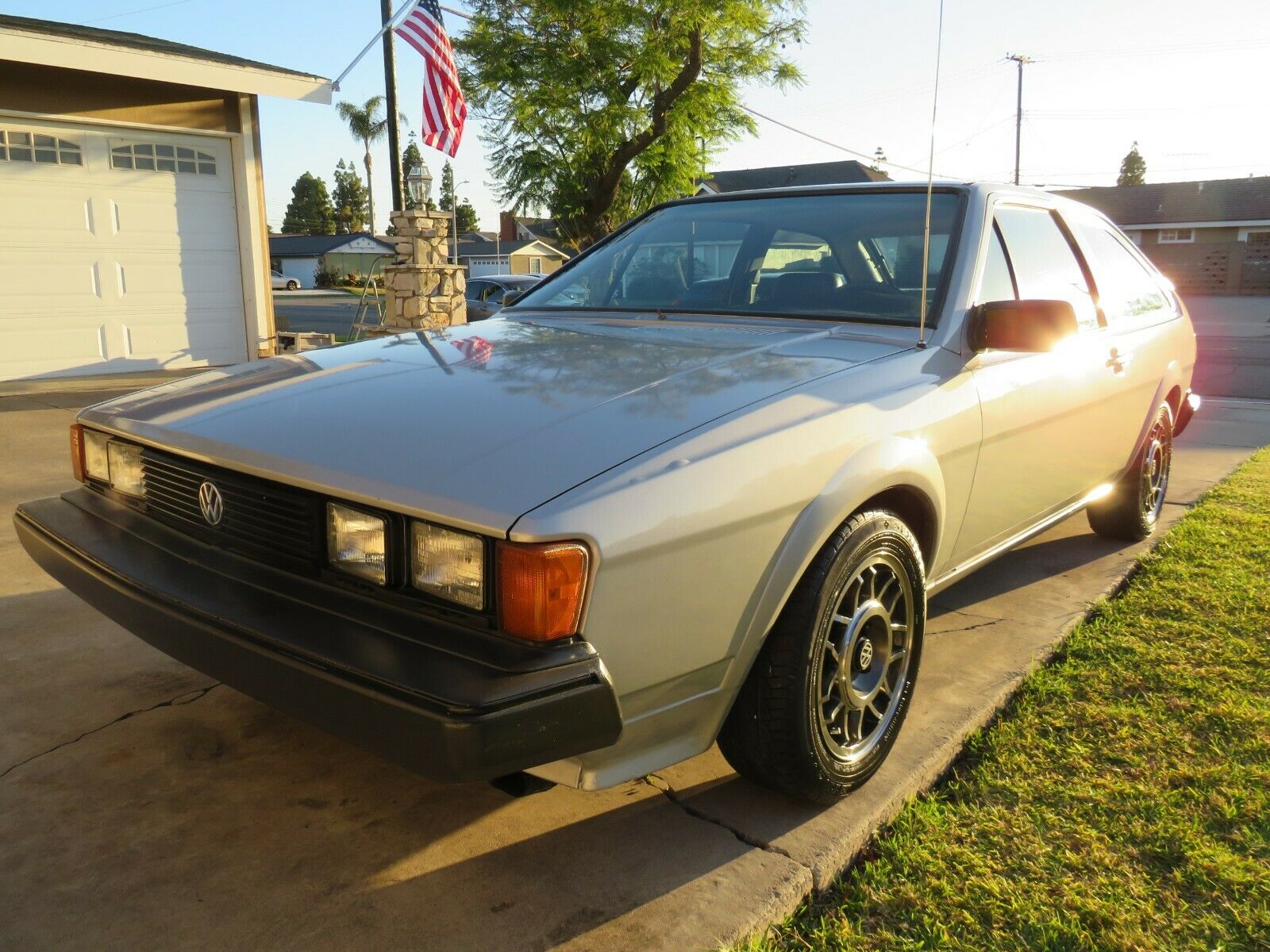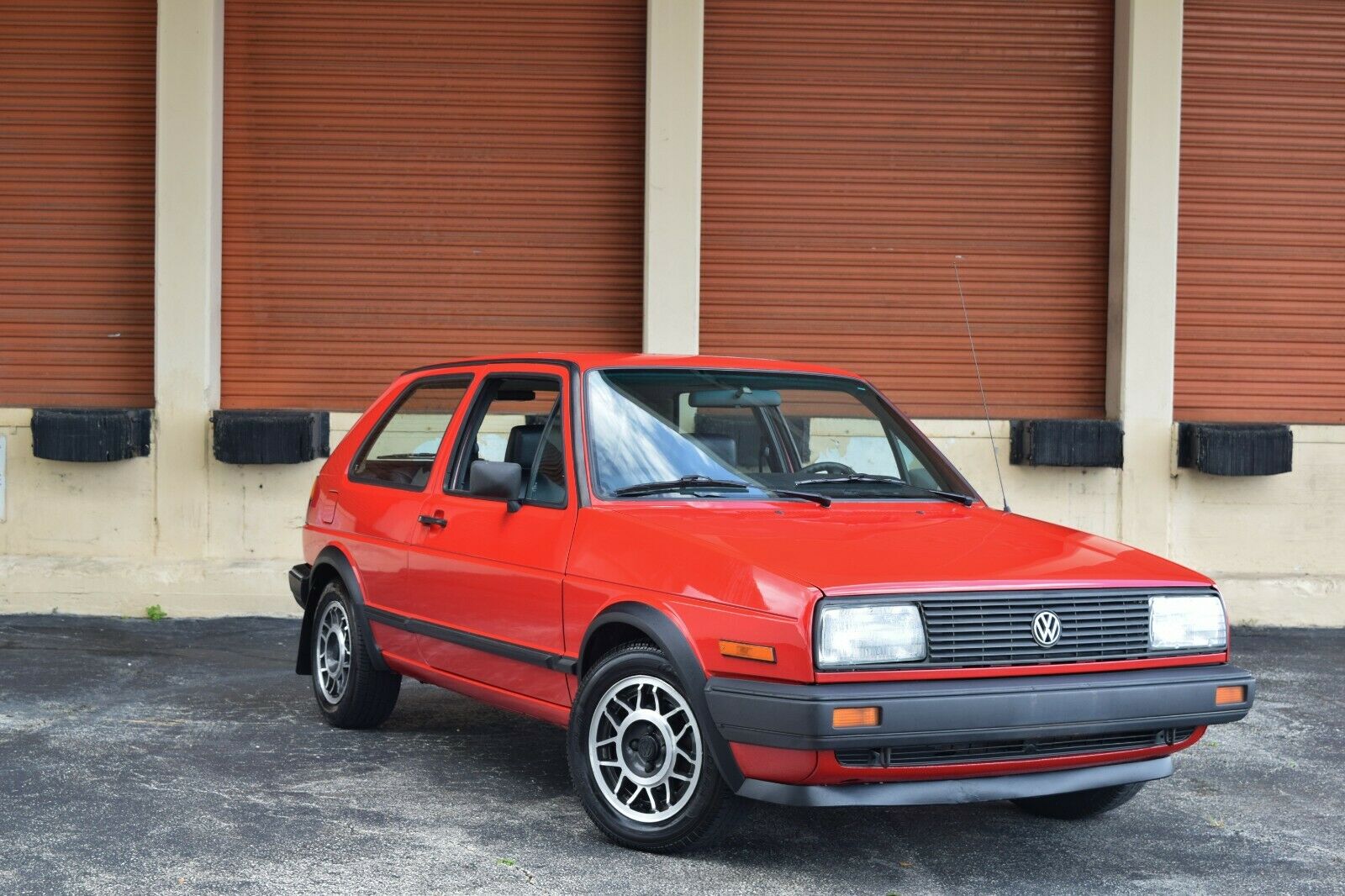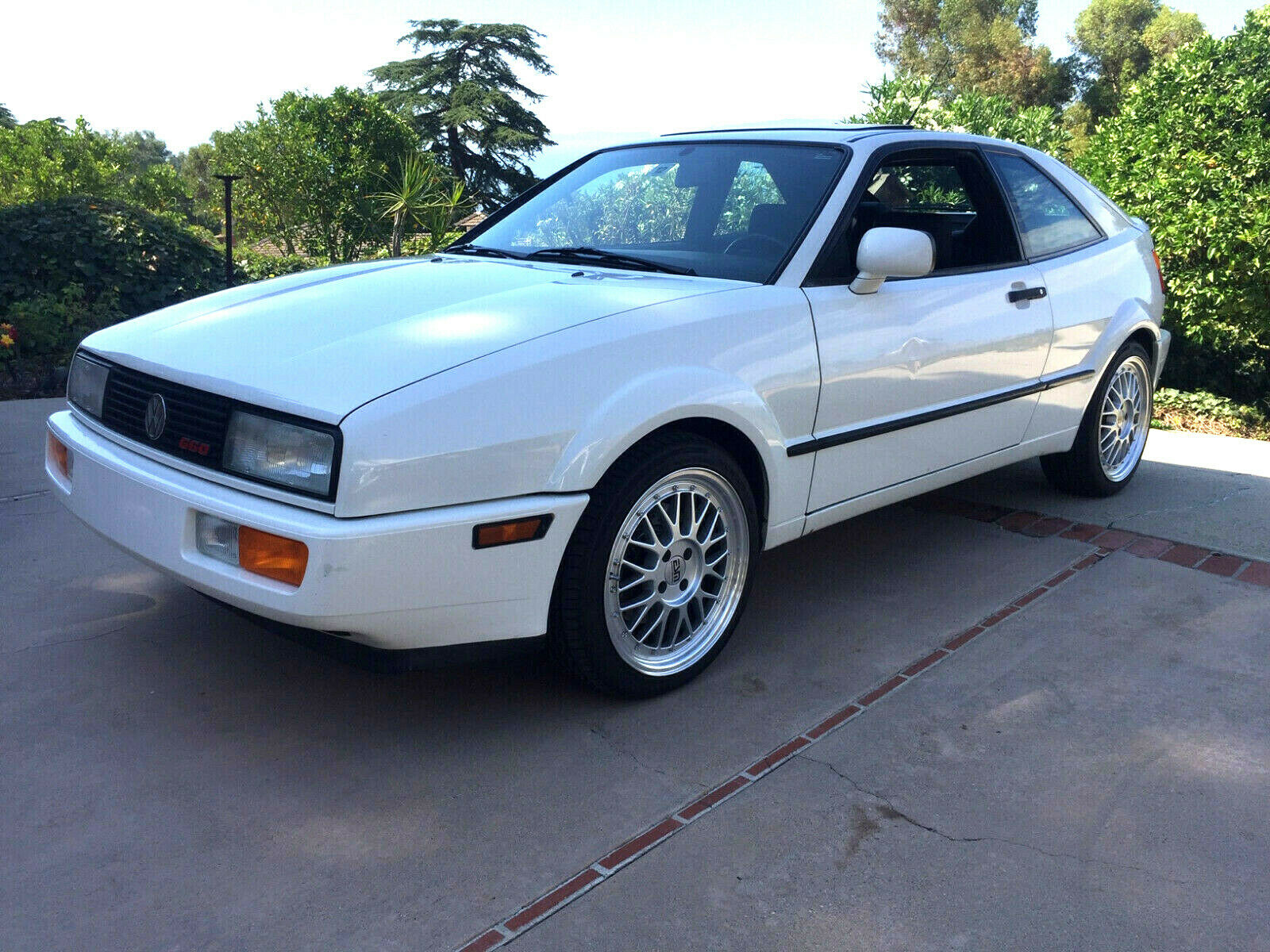In early 1986, three models of the Golf were available in the US; the basic, no-frills Westmoreland model, the upgraded ‘Wolfsburg’ model with aero headlights, an upgraded stereo, wider body moldings, nicer cloth, and wheel trim rings, or you had to make the not unsubstantial jump in price to the GTI model. Replacing the basic 85 horsepower 1.8 was a high-compression HT 100 horsepower unit. It didn’t sound like a lot, but that did represent a roughly 20% gain in power. Signature red-striped trim announced that this was the performance variant of the hatchback, and you also got 4-wheel discs as a first in the U.S. range. Those brakes hid behind carry-over “Avus†(Snowflake) wheels, though instead of the machine/dark gray finish the A1 had, they were now all silver and with “Volkswagen†imprinted on flush covers. Sometimes GTIs were equipped with “Montreal†(Bottlecap) alloys which were also shared with the Jetta GLI. Application seems somewhat indiscriminate. The GTI also had an upgraded suspension with front and rear sway bars and a close-ratio 5-speed manual as the only transmission. Of course, the interior was also upgraded with a leather-wrapped steering wheel borrowed from earlier GTIs, a multi-function display and specially-trimmed cloth sport seats.
In all, it was a substantial upgrade over the standard Golf, and you could of course further opt to include a sunroof, air conditioning, power steering, and a nice radio. Early U.S. Mk.2 GTIs were only available in Mars Red, Diamond Silver Metallic, black, or Alpine White as seen here. Today’s example has a few mods but stays true to the simple formula:
